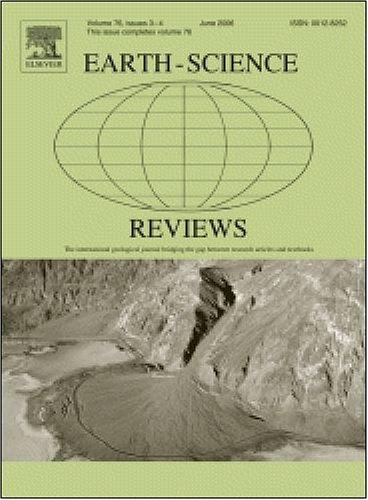Archean inheritance in Paleoproterozoic orogens: Example of the Southeastern Churchill Province, Trans-Hudson Orogen, Canada
IF 10.8
1区 地球科学
Q1 GEOSCIENCES, MULTIDISCIPLINARY
引用次数: 0
Abstract
Deciphering the genesis and evolution of crustal lithotectonic blocks and defining the nature of their boundaries are prerequisites for assessing the nature and duration of crustal assembly processes through time and identifying new ore systems. However, ancient small-scale crustal masses and peripheral areas of large cratons have often been involved in subsequent orogenic cycles, heavily reworking and partially overprinting primary geological records, and hindering straightforward tectonic reconstruction. In this study, we present a new comprehensive summary of the geochronological record of the Southeastern Churchill Province (SECP), Trans-Hudson Orogen, Québec, Canada. New time-space diagrams and distribution maps of the Archean to Paleoproterozoic bedrock units form the foundation of our understanding of the tectonic history and cratonization processes in this region. The SECP records an Archean evolution from c. 2920–2735 Ma TTG magmatism forming a newly defined nucleus crustal block, the Koksoak Domain; c. 2735–2690 Ma orthopyroxene-TTG and hybrid magmatism at the margins of the latter; c. 2690–2620 Ma tholeiitic to calc-alkaline volcanism, partial melting of basement-rocks, and basin development upon extensional tectonics in its core; and a period of tectonic quiescence until c. 1.9 Ga. The units of the Koksoak Domain feature a similar magmatic evolution, in terms of timing and chemistry, as the Douglas Harbour Domain of the NE Superior Craton and perhaps the basement of the Meta Incognita microcontinent, defining the new Ungava Bay Terrane. The Paleoproterozoic record of the SECP provides evidence for the reactivation of inherited structures at the lithospheric scale, limited strike-slip displacement of Archean blocks, and structural control on endowment. These findings align with the previously proposed model of successive accretion of crustal blocks over approximately 100 million years (c. 1900–1800 Ma). Our work emphasizes the necessity of tracking lithotectonic blocks and their boundaries through time, especially in terranes that have been subjected to multiple orogenic cycles.
古元古代造山带的太古代继承性:以加拿大跨哈德逊造山带丘吉尔省东南部为例
破译地壳岩石构造块体的成因和演化,确定其边界的性质,是评估地壳组合过程的性质和持续时间,识别新的成矿系统的先决条件。然而,古代小尺度的地壳块体和大型克拉通的外围地区往往参与了随后的造山旋回,对原始地质记录进行了大量的改造和部分覆盖,阻碍了直接的构造重建。本文对加拿大quacemubec跨哈德逊造山带东南部丘吉尔省(SECP)的地质年代学记录进行了新的综合总结。新的太古宙至古元古代基岩单元时空图和分布图为认识本区构造历史和克拉通化过程奠定了基础。SECP记录了从约2920-2735 Ma TTG岩浆活动开始的太古宙演化,形成了一个新定义的核壳块体——kok浸泡域;c. 2735 ~ 2690 Ma正辉石岩- ttg及其边缘杂化岩浆作用;c. 2690-2620 Ma拉斑岩-钙碱性火山作用,基底岩部分熔融作用,盆地在岩心伸展构造作用下发育;和一段构造静止期,直到约1.9 Ga。Koksoak域的单元在时间和化学方面具有类似的岩浆演化特征,与东北上克拉通的道格拉斯港域和Meta Incognita微大陆的基底相似,定义了新的Ungava湾地体。古元古代的记录为岩石圈尺度上继承构造的活化、太古宙块体有限的走滑位移以及构造对禀赋的控制提供了证据。这些发现与先前提出的大约1亿年(约1900-1800 Ma)的地壳块体连续吸积模型一致。我们的工作强调了随时间跟踪岩石构造块体及其边界的必要性,特别是在经历了多次造山旋回的地质体中。
本文章由计算机程序翻译,如有差异,请以英文原文为准。
求助全文
约1分钟内获得全文
求助全文
来源期刊

Earth-Science Reviews
地学-地球科学综合
CiteScore
21.70
自引率
5.80%
发文量
294
审稿时长
15.1 weeks
期刊介绍:
Covering a much wider field than the usual specialist journals, Earth Science Reviews publishes review articles dealing with all aspects of Earth Sciences, and is an important vehicle for allowing readers to see their particular interest related to the Earth Sciences as a whole.
 求助内容:
求助内容: 应助结果提醒方式:
应助结果提醒方式:


